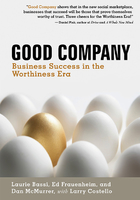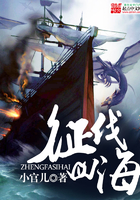If you're like most leaders, you go to work every day and sprint. You don't worry about restraint; you get things done. Chances are you also lead those around you to go as fast as they can. As you see competitors and customers changing, you feel more pressure to go faster and push harder. Although you do more within your limited work hours, the extra effort often delivers less.
Even the most senior leaders can fall into this sprint trap, running the wrong race for their company.
Some leaders run the wrong race because they focus only on short-term performance. Some focus on quarter-by-quarter sales volume, others on year-on-year profit. What matters most is enduring growth-that is both long-term and profitable. It's the holy grail. But it's not easy! Delivering short-term performance also is vital and there is seldom a long term for a business that cannot perform in the short term. In our era, many businesses struggle to grow because they have to perform today at the same time that they must also transform for tomorrow, and they lack the capacity for it.
In pursuing business growth, we as leaders often pursue many priorities-innovation, increased market share, higher margins, culture change-all at the same time. None of these on their own is bad or wrong. In fact, they are all good components of growth. But too often we try to do too much all at the same time and in doing so, we achieve less. By doing more, we actually see a lower return on our efforts.
Leading long-term profitable growth requires us to push ourselves, our teams, and our business as far and fast as we can within the limits of our capacity. Sometimes this means going slower; other times it means going faster. At the same time, we need to build capacity for continued growth, which often requires new capabilities for the organization, teams, and individuals. As we pursue these dual aims, we also need to conserve our personal and collective energy to endure over time. This balanced, long-term way of thinking and behaving is what I call Intelligent Restraint.
Although Intelligent Restraint may look different across companies and markets at different points of maturity, the principles hold true across industries, growth rates, and geographies. The idea makes as much sense for an Ironman athlete as it does for the CEO of a large company, the leader of a complex project, or the founder of a small start-up.
As part of the research my company conducted to understand the difference between leaders in high-growth businesses compared to those leading in slow-or no-growth businesses, we held in-depth interviews with more than 30 top regional executives based in Asia. We also gathered financial data on their companies' performance. As these were all very senior leaders and we were looking over a multiyear period, it's safe to say that they either did or did not lead the growth of the business reflected in the numbers.[3] We found that the "Growth Leaders" practiced Intelligent Restraint in many different ways. They also behaved in ways that are contrary to what popular management trends suggest, such as focusing on your strengths or always going fast. They found a pace for growth that delivered results and built capacity for the future. These Growth Leaders are role models for creating enduring growth; we can learn from them and be inspired by them, just as we are inspired by accomplished athletes.
But at its core, Intelligent Restraint helps us to find our own right pace for enduring growth. This book will guide you to translate the principles and rules of Intelligent Restraint to your business and put them to work for you.
Growth Demands Us to Lead Like an Endurance Athlete, Not a Sprinter
Driving long-term, profitable growth requires us to build capabilities and capacity as if we were an endurance athlete. It's a journey in which we as leaders must push ourselves and others to go as far and fast as we can, but no further. We may complete one leg on the long journey, only to find ourselves completely unprepared to tackle the next leg. I learned this lesson on a personal level the hard way.
In May 2002, I lost my parents in a car accident while they were in Honduras undertaking community development work. The fact that they died doing what they loved gave me no solace whatsoever. When I returned home to Singapore after the funeral and family gathering, I felt a profound loss of hope. For nearly a month, my jet lag woke me early every morning and I'd go out for what I called my "mourning walks." The jet lag passed and I kept walking. Over the months I started to jog, and then to run. It was the therapy I needed to cope with an inexplicable loss.
Christmas 2002 was not a happy day for me. For the previous seven months, I'd cried nearly every day. I'd had no appetite and had lost so much weight that, in happier times, I would have been delighted. I mourned for my loss. I mourned that the baby we were adopting would never know my parents. I mourned because the twenty-fifth was my dad's and my birthday and we'd never celebrate our birthdays together again.
So that Christmas night, I decided to do something that I could focus on and strive for. I decided to give myself hope again. The only thing I could think of was to run a marathon.
A year later I finished my first marathon. When I crossed the finish line I cried, but it wasn't from joy or pain. It was from a sadness far worse than any other I'd felt over the past year of running. I knew for good that all the running in the world was never going to bring my parents back. Now when I look back on that time, I see that as the day I started my journey to become an endurance athlete.
After a few weeks of rest and regaining my excitement to run, I turned my sights to completing an ultradistance race. I'd read about the Mongolia Sunrise to Sunset ultramarathon and it completely captured my imagination. This 100k run is promoted as the world's most beautiful race, and that can't be far from the truth. The course runs along a lake so pristine you can see the bottom from the mountaintops and through a wooded and mountainous area known as Kh?vsg?l Nuur which is within sight of Russia.
For six months I trained faithfully. As my volume increased, I found myself focusing almost entirely on running. Any cross-training I'd done in the buildup to the marathon went away and, as I went further, I also reduced the amount of time I spent stretching. I increased my training volume and completed training runs of 30, 50, and 80 kilometers around my home. In March, I began to experience pain in my left calf muscle but didn't worry too much about it. When it hurt too much, I went in for some physical therapy and before long I was out running again.
Six weeks later (and 10 days before I was to fly off to Mongolia), I was on my final long run along a dirt path in the jungle about 15 kilometers from my home in Singapore. I came across a large male monkey sitting for a bite of lunch. After running 32 kilometers and carrying a bag of empty food packets, I must have smelled like dessert to him. He shrieked and ran toward me. I shrieked too and sprinted as fast as I could in the opposite direction. Suddenly I felt the sensation of a knife ripping into my leg. I thought the monkey had bitten me. But it wasn't the monkey or a knife. It was a rip in the belly of my left calf, a rip I'd allowed to happen slowly over the past months as I ignored the symptoms. I limped the five kilometers back to my car and drove myself home.
I'd overtrained a set of muscles and my calf had lacked the strength and flexibility to cope. Fortunately, I took my rehabilitation seriously and after a few months my calf recovered and I went on to complete a few more half marathons and even a few triathlons (a race that combines swimming, cycling, and running), including two Ironman 70.3 races.[4] What I appreciate about triathlons is that you have to learn so much. But what I love more than anything is to be out running. And while I've never been fast, I can run really far.
In 2010 I decided it was time to train once again for the Mongolia 100k. In August 2011 I finally made it to Mongolia, with my husband and our two daughters along for support. The race began in the cold, dark early morning. As usual, I was soon at the end of the pack. My slow pace didn't diminish my spirit. I felt excited and scared at the same time, even as another racer broke her leg in the first two, dark kilometers on a wooded trail.
About 18 kilometers into the race, I faced my first mountain. As I trotted up, my heart was exploding in my chest and all the energy seemed zapped from my legs. I made it over the top and back down, only to face a second mountain. This one was nowhere near as high, but it was far steeper. I was practically climbing the mountain.
I stepped over a low-lying branch and it slapped against my calf and cut it. Flies flocked to the blood oozing down the front of my leg. Of all my running memories, this was the lowest point. I considered stopping to swat the flies but didn't have the energy to do so. I kept going.
As I crossed over the top of this second mountain, I realized I had neither the strength in my legs nor the cardiovascular fitness to go fast enough to make the cutoff time for the 100k.
In my quest to not injure myself during training, I hadn't pushed myself fast enough and I hadn't built the capacity I needed to finish the race. I'd trained near sea level, whereas the base altitude in Mongolia exceeded 5,000 feet. In the end, I ran the distance of a regular marathon (42k, or about 26 miles) and gave up. I'd trained for the wrong race!
On the positive side, I learned an amazing amount from this experience. I learned that great motivation and hard work aren't necessarily enough to complete endurance races. I'd done what I loved and had run long, slow distances on flat terrain in the heat. I stayed too much within my comfort zone. I failed to pull back when I needed to, and-more importantly-I failed to push myself hard enough in new ways like running up steep terrain, in the cold, and at higher elevation.
The most profound insight I've gained on my journey to becoming an endurance athlete is the power of restraint. I've learned that at times I have to hold back even when I think I can go faster or farther, and other times I have to restrain myself from doing things the way I know how to do them. I've also learned that when I do what feels most natural and that I most enjoy, I may not be preparing myself most effectively for the next race.
Today I train in a completely different way than when I started. I am more intentional and focused. After working with a sports coach, I've learned how to use routines and variability to go faster and farther without getting hurt. More importantly, I've learned how to put in less time and train smarter to get better results.
We spend our life performing and preparing ourselves to perform better in the future-whether as a musician, surfer, jockey, elementary school teacher, factory supervisor, or business leader. Using the right restraint forces us to be more mindful, to train the right way, and to listen for signs that we might be going beyond our capacity.
Pushing the Limits of Growth
It's difficult to know what the "right" amount of restraint is for a business. Sometimes, leaders lead with too little restraint, sometimes with too much. What's clear is that it's really, really hard to get it just right.
One reason it's so hard is because we are leading organizations, and an organization is a complex combination of many interconnected systems. An organization is like the human body, which is an amazing structure of 11 different, interconnected systems. Take the respiratory and circulatory systems, for example. The respiratory system brings air into the body and removes carbon dioxide. The circulatory system picks up oxygen in the lungs and works like a transportation system moving blood filled with oxygen throughout the body and then taking waste in the form of carbon dioxide back to the lungs to be exhaled. These two systems have to collaborate and have clear touchstones. One interfaces with the external environment and the other is an internal system. If the air quality is very poor, both suffer. If the body is sick, they are both impacted. If the body is very healthy and strong, they work better, together.
Endurance training systematically increases the capacity of our complex body to withstand the stress of training without breaking down. Just as bodies are impacted by the external environment and the health of the body itself, organizations also are impacted by external forces like government regulations, new technologies, competitor activity, and consumer preferences as well as the overall culture and health of the organization.
A company that anticipates external changes and effectively adapts is more likely to survive over the long term. This is why endurance training is an excellent parallel for how to increase a company's growth capacity. Leaders who act like endurance athletes can systematically increase the capacity of their organization to execute their day-to-day business as they build capacity for the future-without damaging people and the business itself. Part 1 of this book builds off the endurance training metaphor to explore how leaders can push their capacity to the limit, but no further.
Chapter 1 tells the stories of three companies: one that had too little restraint, one that had too much, and one that found the "just right" balance that characterizes Intelligent Restraint. Chapters 2, 3, and 4 build on these case studies by describing three core principles of Intelligent Restraint. These principles provide us a way of thinking about how a business can build growth capacity:
Principle One: Capacity Determines How Far and Fast You Can Go
Principle Two: The Right Capabilities Increase Capacity
Principle Three: The Right Pace Wins the Race
In each chapter, you'll read about how the principle plays out in a business and you'll find tips and tools to help you apply the ideas within your own organization or team.
Why Bother with Theory
In endurance training, understanding a bit of theory can make a huge difference in your ability to push yourself at the right pace and not get hurt.
For example, there is an upper limit of your heart rate called the "aerobic threshold." Below this threshold, you burn glycogen, which is an efficient fuel. But above that threshold, you burn fat, which is harder for your muscles to access and use. In a long race like a marathon or triathlon, you eventually have to burn fat because all your glycogen gets spent. This theory explains why during endurance training, you need to teach your body to burn fat as fuel at the pace you want to race. Using specific workouts that vary intensity in different ways forces you to work close to the upper limit of your aerobic threshold and only go beyond it for short periods. This kind of training is much more tiring than simply going longer distances at a slower pace.
If you don't understand why these grueling workouts matter, you're less likely to persist through the painful exertion. It would be easy to start thinking that the purpose of endurance training is simply to clock lots of miles. That belief would lead you to waste huge amounts of time in training without getting what you most need to succeed.
Likewise, a little bit of theory about Intelligent Restraint helps explain why you have to make certain hard choices as you pursue enduring growth. The three core principles of Intelligent Restraint apply as much to business growth as they do to success as an endurance athlete.
The Three Principles of Intelligent Restraint
Principle One: Capacity Determines How Far and Fast You Can Go (Chapter 2)
Maximum capacity is the highest level of performance at which a system can perform without breaking down. It's more than the sum of individual skills or attitudes, or the physical capability of a building or piece of equipment. When we understand the gaps between performance and capacity, and how maximum capacity in the future will be different from today, we can create a program to build capabilities that increase capacity. In turn, this process allows us to avoid "boom-splat" cycles of growth. When we break that painful pattern, we conserve human and organizational energy and resources to spend on building a base for sustained growth in the future.
Principle Two: The Right Capabilities Increase Capacity (Chapter 3)
Capabilities are the power and practical ability to perform or execute a given task. To build capacity for growth, we need to master a few critical capabilities at the individual, team, and organizational level. Each business will have a small number of unique capabilities required by its strategy. In addition, our own and others' research shows that there also are certain capabilities that predict growth. In this book, I focus on two capabilities that help increase adaptability and speed: outside-in thinking and customer-aligned innovation. Building the right capabilities for growth allows leaders to increase capacity to execute the day-to-day business as it also builds capacity for the future.
Principle Three: The Right Pace Wins the Race (Chapter 4)
Pace is the speed at which we can perform for a given distance or period of time. As business leaders, we can push our organizations and people to go really fast for a short period of time, but if we go too fast for too long, we burn out our people and burn through our cash and other resources. In a race, we need to conserve some energy to maintain a fast pace and we need perseverance to sustain this pace even when it becomes uncomfortable. On the other hand, in training, we vary pace significantly because this triggers different development outcomes like strength or cardiovascular fitness. When you can train at "race pace" and can recognize "maximum effort," you can pace yourself, your team, and the business to execute your strategies-and at the same time build new capabilities for the future.
Make Tough Choices with Intelligent Restraint
Growth Leaders face many situations with seemingly conflicting objectives. For example, they need to explore new opportunities and at the same time, they need to exploit their existing assets such as manufacturing facilities, retail outlets, or ships. They need to drive sales and at the same time they need to grow profits. These are all paradoxes of growth.
The idea of managing paradoxes, polarities, and tensions isn't a new one. Academics call this ability "ambidextrous leadership," and recently Michael Tushman and his colleagues wrote about it as "Both/And Leadership."[5] Paradox management helps to manage complexity.
Intelligent Restraint helps us manage the complexity that growth brings.
Whereas part 1 gives us a way of looking at how to increase limits of growth, part 2 describes three practical rules of thumb that help leaders make important trade-offs needed for enduring growth. These trade-offs help us make better decisions and release capacity for growth. The three Rules of Intelligent Restraint are:
Rule #1: Focus Overrules Vision
Rule #2: Routines Beat Strengths
Rule #3: Exert, Then Recover
The Three Rules of Intelligent Restraint
In endurance training, you can apply simple rules of restraint to ramp up and ramp down your training program ahead of a race. These rules of thumb help you make important trade-offs between exertion and recovery.
For example, one rule of restraint I've always found helpful for running is the "10% Rule." This rule says that each week, you only increase the length of your longest run by about 10 percent. You also can apply the 10% Rule to the total volume of running in a week. What's important is ramping up running volume in a disciplined way.
Rules like the 10% Rule enable you to increase your training levels, but not so fast that you get hurt. At the same time, they restrict exercise volume to allow the body to recover and get stronger so that you're ready for the eventual race.
There also are rules of restraint that guide recovery if you are hurt or injured, perhaps as a result of failing to pay heed to the rules about training volume! My sports coach advised me not to train for three days after experiencing a sharp pain, and to go see him if the pain didn't go away.
Applying these rules of restraint helps me and other athletes build capacity without getting hurt. As the weeks pass, the body is able to go faster and farther without breaking down. The practice of restraint in endurance training is often the difference between an athlete who is still going at age 60 and one who burns out or injures herself to the point of quitting the sport.
Unfortunately, we don't have simple rules of restraint to help us build capacity in an organization or a team. The rules we have in business prevent us from breaking laws or standards of governance. For example, we have limits on the financial value of a gift, or a policy on what can or cannot be said in public about the firm's strategic plans.
These types of rules are important. But, while they keep us from doing bad things, they don't help us drive positive things, like improved customer service or successful execution.
Chapter 5, 6, and 7 cover the three Rules of Intelligent Restraint that help you conserve energy and drive growth at the same time. When you apply these rules, you can take yourself, your team, and your organization as far and fast as they can go without causing harm.
Rule #1: Focus Overrules Vision (Chapter 5)
Vision is important and gets you going, but focus is what gets you across the finish line. The right focus clarifies how to allocate resources like time, money, and support. Growth Leaders use focus to drive behavior that's consistent with important values, and to build both "vertical alignment" and "horizontal alignment." Focus conserves energy that is needed to perform today as you transform for tomorrow.
Rule #2: Routines Beat Strengths (Chapter 6)
Strengths are useful, but they can become a liability when overused. The right routines efficiently shape the new ways of thinking and behaving that we need for growth. Effective growth routines allow small changes that can trigger larger changes to happen across the organization. Growth Leaders create and utilize routines that conserve energy as they make it possible to learn or change faster.
Rule #3: Exert, Then Recover (Chapter 7)
Exertion and recovery need one another for maximum effect. You have to train with the right levels of exertion to build your capacity, and you have to engage in the right kind of recovery to allow your body and mind to keep exerting. To deliver results and build capacity for growth at the same time requires high levels of exertion that consumes personal and organizational energy that must be replenished.
Put Intelligent Restraint to Work
Part 3 looks across the Principles and Rules of Intelligent Restraint to help you put the concepts into action.
Scale to Grow (Chapter 8)
To scale a business for growth, you need to increase organizational, team, and personal growth capacity fast enough to match the pace of transformation and growth-at an affordable cost. The only answer is having an "abundance" mindset when it comes to people development. We need to develop anyone, anytime, anywhere to build the broad base of capabilities the most efficiently. I'm not talking about sending scores of employees to formal training programs. I'm talking about instituting one or more cost-effective routines to transform everyday work into on-the-job development.
Lead with Intelligent Restraint (Chapter 9)
Leading with Intelligent Restraint is not an all-or-nothing kind of thing. You can use the Principles of Intelligent Restraint to think more systemically about what you need to know and do to build capacity for long-term growth. You also can use the Rules of Intelligent Restraint to conserve energy, make trade-offs, and get the right pace in place for growth. Growth Leaders don't waste effort on unnecessary perfection and know when good enough is good enough.
Chapter 9 highlights stories of leaders from around the world whose behavior exemplifies one of more aspects of Intelligent Restraint.
As with endurance training, learning how to lead with Intelligent Restraint requires you to apply the theory and guidelines over a period of time, at your own pace, and in a way that meets your business needs. You master Intelligent Restraint by practicing-training yourself, your team, and your organization to become endurance athletes of business growth.












